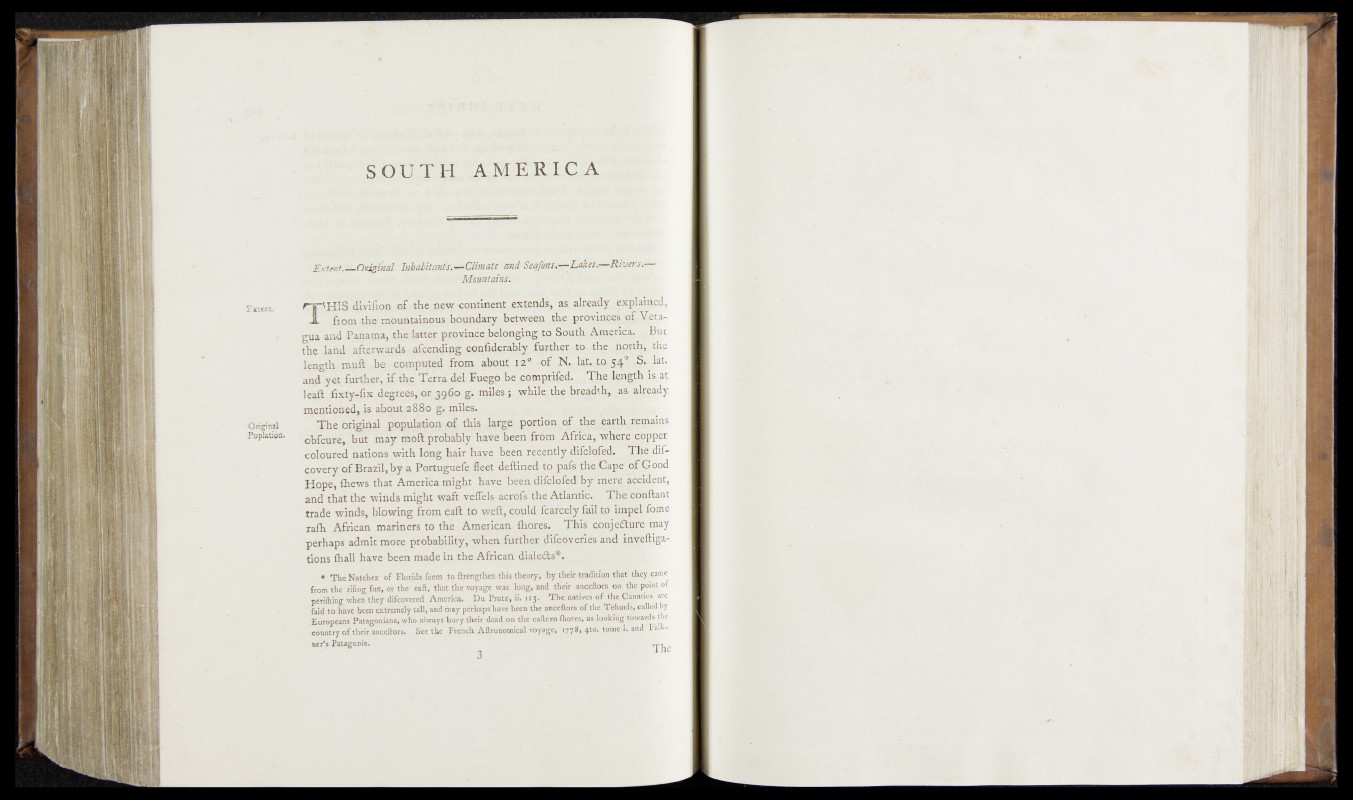
S O U T H A M E R I C A
-Extent.—Original Inhabitants^—CHmatt md8e^s.f^L&eS>*Mvenss—
Mountains.
ri^HIS divifion. of the new continent extends, as already explained,
J- from the mountainous boundary between the prgyjpsce^ o^'^pra-
gua and Panama, the latter province belonging tq. South America, ^jBut
the land afterwards afeending confiderabLy further tp,:the nprth, the
length muft be computed from about 12Q jof btf, latj to 549 -S|l lat.
and yet-fnrther, i f the Terra del Fuego be comprised, .The flgngthE;f^
leaft fixtydijc degrees, or. 3960 g. miles ; wl^^t^e breadth ^a^dready
mentioned, is. abpntaSSo.g. mAeis,
Original The original population of large. portion ,qf tho earth^pains
Peplat&u 0pfcure> but may moft probably have been from Africa, ^her|:£(|[per
coloured nations with long hair have been recently difclpfed.^ The dif-
covery of Brazil, by a Portuguefe fleet deftined to pafs the Cape jT ©ood
Hope, Aiews that America might have-been difclofed by m^adbident,
and that the winds might waft veffels-acrofs the Atlantic. The;cdnftant
trade winds, blowing from eaft to weft, could fcarcely fail to impel »me
rafh African mariners to the. American flxores. This conjecture may
perhaps admit more probability, when further difeoveries and inyeftiga-
tions Avail have been made in the African dialeCts*. j
* The Natchez o f Florida feem to ftrehgthen this theory, by their tradition that they came
from the riling fuir, or the eaft,” that the voyage was long, and their anceltors on the point of
periihing when they difeovered America. Du Pratz, ii. 113. The natives of the Canaries are
faid to have been extremely tall, and may perhaps have been the anceltors of the Tehucls, called by
Europeans Patagonians, who always bury their dead on the eaftern Ihores, as looking towards the
country o f their anceltors. See the French Agronomical voyage, 177 8, 4*0. tome i. and ‘ Falk